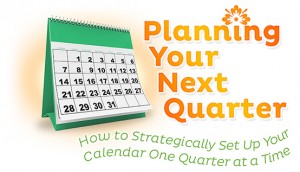Grading, Achievement, and Self-Evaluation by Gini Cunningham
 These three topics could fill pages but we will narrow this to 3 grading, 3 achievement, 3 self-evaluation, and 1 round-up productivity tip of the three. They really tie together to produce strong, inventive thinkers and doers.
These three topics could fill pages but we will narrow this to 3 grading, 3 achievement, 3 self-evaluation, and 1 round-up productivity tip of the three. They really tie together to produce strong, inventive thinkers and doers.
- Grades are numbers on a list or letters in the alphabet; they may reflect learning, they may indicate the ability to follow directions, they may signify a supreme ability to cheat. Grade by studying learning indicators and student work, listening to explanations, and watching the connections to finite learning goals; these come much closer to designating the true degree of understanding and ability.
- Grades are the resulting signal of well designed assessments that carefully match goals and objectives. They should be used to guide next steps in teaching, not just be a sign of the “end” of this segment of instruction.
- Poor grades should not mean failure but rather that the student has not mastered certain concepts and skills yet. Fs hurt students and teachers although sometimes remedying failure is difficult and impossible with lackadaisical, unmotivated students (and their parents) or laissez-faire teachers.
- Student achievement reflects what a student can do at this moment in time. Use it to determine next steps in instruction.
- No student ever wants to fail to succeed; using your background knowledge, skills, and mystical powers to transport every student to new levels of success.
- Student achievement does not necessarily match grade level standards and benchmarks. Instead of being completing discouraged because students are not at the level that they need to be knowing that you are providing excellent educational instruction where students can build toward academic success, continue manipulating instruction and strategies. Your faith and inspiration are motivating factors.
- Check and recheck achievement during the lesson and after instruction is complete. Some students get it immediately – challenge them; some are unsure – reinforce them; some are struggling – institute mini-lessons to fill in the gaps. Get feedback from students to be sure that they are clear on learning goals.
- Students who own their learning because they self-evaluate their progress offer honest insight into what they know and where they need help.
- Self-evaluation leads to independent learners; independent learners thrive through curiosity, wonder, and the desire to learn more.
- Grades indicate achievement at a point in time; self-assessment reflects needs and strengths. Independent learners may not care about letter grades or class rank; they may struggle to get the job done because they like other tangents. Let them tell you (and their parents) how they are progressing and what they need next. Double check in multiple assessments, both written and visual, to determine gaps and pinnacles.
© Gini Cunningham (adapted from her book, The New Teacher’s Companion: Practical Wisdom for Succeeding in the Classroom (ASCD). In addition to her writing, Gini is an author, workshop leader, and consultant who provides education for educators.
 And to have peaceful, predictable, productivity for your next quarter, you will want to access the teleseminar Planning Your Next Quarter where you learn how to strategically set up your calendar one quarter at a time…
And to have peaceful, predictable, productivity for your next quarter, you will want to access the teleseminar Planning Your Next Quarter where you learn how to strategically set up your calendar one quarter at a time…


